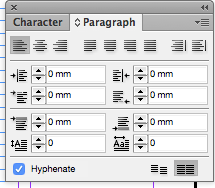In short, your brand is the way your customer perceives you.
It is critical to be aware of your brand experience and have a plan to create the brand experience that you want to have… a good brand doesn’t just happen… it is a well thought out and strategic plan.’
BRANDING PROMOTES RECOGNITION.
People tend to do business with companies they are familiar with. If your branding is consistent and easy to recognize, it can help people feel more at ease purchasing your products or services.
YOUR BRAND HELPS SET YOU APART FROM THE COMPETITION.
In today’s global market, it is critical to stand apart from the crowd. You are no longer competing on a local stage, your organization now competes in the global economy. How do you stand out from the thousands or millions of similar organizations around the world?
YOUR BRAND TELLS PEOPLE ABOUT YOUR BUSINESS DNA.
Your full brand experience, from the visual elements like the logo to the way that your phones are answered, tell your customer about the kind of company that you are. Are all of these points of entry telling the right story?
YOUR BRAND PROVIDES MOTIVATION AND DIRECTION FOR YOUR STAFF.
A clear brand strategy provides the clarity that your staff needs to be successful. It tells them how to act, how to win, and how to meet the organization’s goals.
A STRONG BRAND GENERATES REFERRALS.
People love to tell others about the brands they like. People wear brands, eat brands, listen to brands, and they’re constantly telling others about the brands they love. On the flip side, you can’t tell someone about a brand you can’t remember. A strong brand is critical to generating referrals or viral traffic.
A STRONG BRAND HELPS CUSTOMERS KNOW WHAT TO EXPECT.
A brand that is consistent and clear puts the customer at ease, because they know exactly what to expect each and every time they experience the brand.
YOUR BRAND REPRESENTS YOU AND YOUR PROMISE TO YOUR CUSTOMER.
It is important to remember that your brand represents you…you are the brand, your staff is the brand, your marketing materials are the brand. What do they say about you, and what do they say about what you’re going to deliver (promise) to the customer?
YOUR BRAND HELPS YOU CREATE CLARITY AND STAY FOCUSED.
It’s very easy to wander around from idea to idea with nothing to guide you…it doesn’t take long to be a long way from your original goals or plans. A clear brand strategy helps you stay focused on your mission and vision as an organization. Your brand can help you be strategic and will guide your marketing efforts saving time and money.
YOUR BRAND HELPS YOU CONNECT WITH YOUR CUSTOMERS EMOTIONALLY.
A good brand connects with people at an emotional level, they feel good when they buy the brand. Purchasing is an emotional experience and having a strong brand helps people feel good at an emotional level when they engage with the company.
A STRONG BRAND PROVIDES YOUR BUSINESS VALUE.
A strong brand will provide value to your organization well beyond your physical assets. Think about the brands that you purchase from (Coca-Cola, Wrangler, Apple, Ford, Chick-Fil-A, QuikTrip)… are these companies really worth their equipment, their products, their warehouses, or factories? No, these companies are worth much more than their physical assets…their brand has created a value that far exceeds their physical value.
The best branding is built on a strong idea… an idea that you and your staff can hold on to, can commit to, and can deliver upon. Your brand needs to permeate your entire organization. When your organization is clear on the brand and can deliver on the promise of the brand, you will see tremendous fruit while building brand loyalty among your customer base.
If you need assistance with your brand, from creating your initial brand strategy to the visual identity elements, contact us for a free consultation…we’d love to help you identify and proclaim your story!






















































